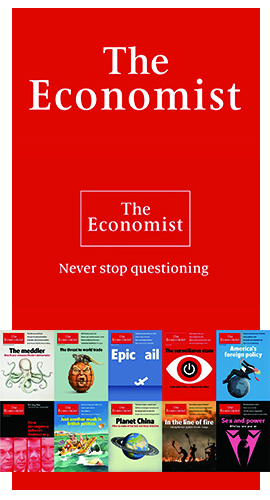The rationalisation behind standardisation is often purported to be through making our lives safer, simpler, more comfortable and more efficient. However, is standardisation a process enhancer or a creativity killer?
標準化背後的合理化通常被認為是通過讓我們的生活更安全,更簡單,更舒適和更有效。 但是,標準化是一個過程增強劑還是創造力的殺手?
今年畢業於中央聖馬丁學院Central Saint Martins College of Art and Design的未來材料 Future Material 研究所畢業 Ching-Hui Yang 所詢問的問題。
這項設計作品是她與英國現代舞者 Valerie Ebuwa 合作,設計了一系的舞蹈訓練裝置作為身體運動的三維符號,並給予人們通過體驗專業舞者的肌肉記憶,提供了一種最有效的「刻意練習」 法,進而可以表演出「完美」的舞蹈動作。 習慣對人們最大的好處就是讓我們能夠在必要的時刻,熟練的操作許多的行為。
大部分人提到「肌⾁記憶」的時候,就會⾺上聯想到學習騎⾃⾏⾞、游泳、跑步和跳舞,即使你有一段時間不從事這些運動,當你⼜重新開始訓練,所花費的時間會縮短且更有效率, 身體能更快的熟悉這些事情。
Muscle memory emerges through associative learning. Once you master a new motor skill, it becomes unconscious and an individual is unlikely to forget it. The more routine a behavior becomes, the less we are aware of it. Examples of muscle memory are found in a lots of daily activities that become automatic and improve with practice, such as swimming, riding a bicycle, playing a musical instrument, martial arts or even dancing.
其實這過程就叫作「程序記憶」,基本上就是透過⼀再重複的 動作來來儲存特定運動神經任務的記憶。然⽽,⼈體獲得這種記憶的速度⼗分緩慢,但一旦獲 得,其遺忘的速度也⼗分緩慢。
This process decreases the need for attention to detail and creates maximum efficiency within the motor and memory systems. Efficiency is the ability to complete a task whilst avoiding wasting effort. Muscle memory is a learning process that uses this concept.
葛拉威爾在《異數》(Outliers)這本書中,他指出無論是哪⼀種專業,成功的最⼤大前提, 都是要有⾄少⼀萬個⼩時的「刻意練習」,無論天⽣基因在那些「有天賦」的人的成就中扮 演何種⾓⾊,他們擁有的主要天賦,其實是「人類⼤腦與身體的適應⼒」,⽽這項天賦,我 們每個人都有!換句話說,⼀萬⼩時的「刻意練習」,這讓我們每個⼈可以實現⾃己的夢想。
According to the book Outliers', the idea that 10,000 hours of deliberate practice are needed to create expert performers. The concept that any of us could fulfill our dreams of by clocking up the hours.
在這個項⽬中,Ching-Hui 想記錄肌⾁記憶的概念,它是一種⼈體記憶的基本學習形式,以便重新思考標準化的定義。⼤多數⼈類的行為似乎被我們的肌肉記憶或社交環境標準化。 標準化背後的合理化常被認為可以讓我們的生活更安全,更簡單,更舒適和更⾼效。
This project aims to document the concept of muscle memory, which is a fundamental form of learning, in order to rethink the definition of standardisation in the future. I have designed a collection of dance training devices as a notation of body movement, and give opportunities for people to choose the most efficient way of gaining ‘perfect’ skills by experiencing professional dancer’s muscle memory.
在構思這個概念念時,Ching-Hui 受到拉邦舞譜的啟發,拉邦舞譜紀錄了不同編舞作品,精準 而簡約地記下動作構成和意圖,即使與原編舞素未謀⾯的舞者,也能根據不同的舞譜將作品重現。然而,這種⽅方式學習舞蹈在現在並不通用。Ching-Hui 經過訪調發現現在學習舞蹈的常⽤⽅法是不可靠的。 例如影片教學不能看出每個位置的三維視圖,然⽽而口頭教學無法讓 人永遠記住每個舞步。出於這些原因,Ching-Hui創造一種捕捉運動的替代方法。
何謂拉邦舞譜?根據國家教育研究院的資料指出,拉邦舞譜又稱拉邦動作譜,被稱為舞譜是因為此一系統廣被舞蹈界人士所引用。其創始人是 Laban, Rudolf Von 於1928年提出的動作譜系統,這是一種利用符號記錄描述身體動作在空間移動之過程及動力。
Labanotation是舞譜家安.哈欽遜取發明人魯道夫.拉邦之名Laban與符號Notation二字合而為一來紀念這位先驅。
參照:Anatole Chujoy, P. W. Manchester《The Dance Encyclopedia》1967.
Labanotation的跳舞方式
Ching-Hui渴望探索不同的材料,技能和概念,挑戰珠寶飾品的定義。她認為將產品設計做為⾝體運動的三維符號可以成為未來探索和記錄人體與意識的新途徑。
在構思項目時,Ching-Hui 的靈感來自 Labanotation 拉班運動分析,這是一種可視化身體運動的方法,它使用一系列符號來表示特定的運動。 但是,透過 Ching-Hui 的這項設計,非常有趣的將運動視覺化與具體化成為一項設計,非常有趣,是一個批判性的藝術設計創作。
珠寶設計師:Ching-Hui Yang
英國倫敦中央聖馬丁
Central Saint Martins College of Art and Design Material Future 研究所
inachinghuiyang@gmail.com
arts x materials 材料研究室歡迎不同合作方式,聯絡請洽Email.













沒有留言:
張貼留言